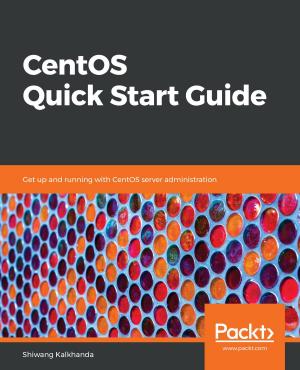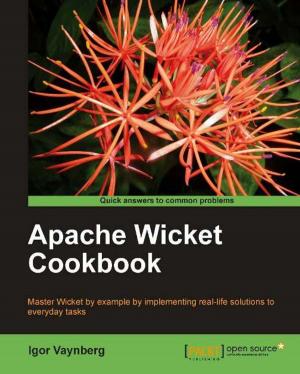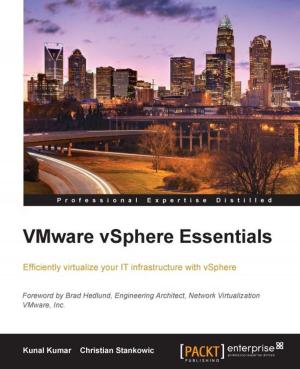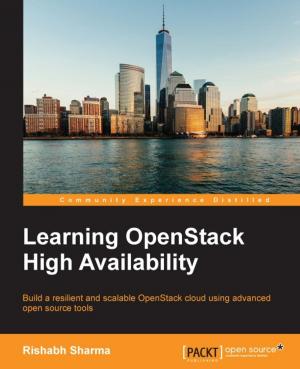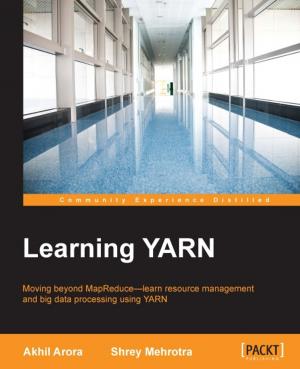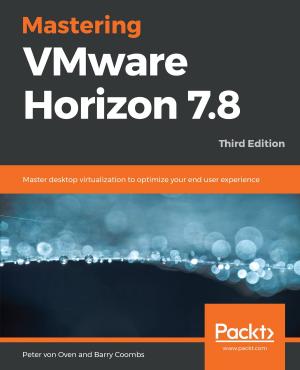Learning Network Programming with Java
Nonfiction, Computers, Internet, Web Development, Java, Programming, Programming Languages| Author: | Richard M Reese | ISBN: | 9781785882562 |
| Publisher: | Packt Publishing | Publication: | August 23, 2016 |
| Imprint: | Packt Publishing | Language: | English |
| Author: | Richard M Reese |
| ISBN: | 9781785882562 |
| Publisher: | Packt Publishing |
| Publication: | August 23, 2016 |
| Imprint: | Packt Publishing |
| Language: | English |
Harness the hidden power of Java to build network-enabled applications with lower network traffic and faster processes
About This Book
- Learn to deliver superior server-to-server communication through the networking channels
- Gain expertise of the networking features of your own applications to support various network architectures such as client/server and peer-to-peer
- Explore the issues that impact scalability, affect security, and allow applications to work in a heterogeneous environment
Who This Book Is For
Learning Network Programming with Java is oriented to developers who wish to use network technologies to enhance the utility of their applications. You should have a working knowledge of Java and an interest in learning the latest in network programming techniques using Java. No prior experience with network development or special software beyond the Java SDK is needed. Upon completion of the book, beginner and experienced developers will be able to use Java to access resources across a network and the Internet.
What You Will Learn
- Connect to other applications using sockets
- Use channels and buffers to enhance communication between applications
- Access network services and develop client/server applications
- Explore the critical elements of peer-to-peer applications and current technologies available
- Use UDP to perform multicasting
- Address scalability through the use of core and advanced threading techniques
- Incorporate techniques into an application to make it more secure
- Configure and address interoperability issues to enable your applications to work in a heterogeneous environment
In Detail
Network-aware applications are becoming more prevalent and play an ever-increasing role in the world today. Connecting and using an Internet-based service is a frequent requirement for many applications. Java provides numerous classes that have evolved over the years to meet evolving network needs. These range from low-level socket and IP-based approaches to those encapsulated in software services.
This book explores how Java supports networks, starting with the basics and then advancing to more complex topics. An overview of each relevant network technology is presented followed by detailed examples of how to use Java to support these technologies.
We start with the basics of networking and then explore how Java supports the development of client/server and peer-to-peer applications. The NIO packages are examined as well as multitasking and how network applications can address practical issues such as security.
A discussion on networking concepts will put many network issues into perspective and let you focus on the appropriate technology for the problem at hand. The examples used will provide a good starting point to develop similar capabilities for many of your network needs.
Style and approach
Each network technology's terms and concepts are introduced first. This is followed up with code examples to explain these technologies. Many of the examples are supplemented with alternate Java 8 solutions when appropriate. Knowledge of Java 8 is not necessary but these examples will help you better understand the power of Java 8.
Harness the hidden power of Java to build network-enabled applications with lower network traffic and faster processes
About This Book
- Learn to deliver superior server-to-server communication through the networking channels
- Gain expertise of the networking features of your own applications to support various network architectures such as client/server and peer-to-peer
- Explore the issues that impact scalability, affect security, and allow applications to work in a heterogeneous environment
Who This Book Is For
Learning Network Programming with Java is oriented to developers who wish to use network technologies to enhance the utility of their applications. You should have a working knowledge of Java and an interest in learning the latest in network programming techniques using Java. No prior experience with network development or special software beyond the Java SDK is needed. Upon completion of the book, beginner and experienced developers will be able to use Java to access resources across a network and the Internet.
What You Will Learn
- Connect to other applications using sockets
- Use channels and buffers to enhance communication between applications
- Access network services and develop client/server applications
- Explore the critical elements of peer-to-peer applications and current technologies available
- Use UDP to perform multicasting
- Address scalability through the use of core and advanced threading techniques
- Incorporate techniques into an application to make it more secure
- Configure and address interoperability issues to enable your applications to work in a heterogeneous environment
In Detail
Network-aware applications are becoming more prevalent and play an ever-increasing role in the world today. Connecting and using an Internet-based service is a frequent requirement for many applications. Java provides numerous classes that have evolved over the years to meet evolving network needs. These range from low-level socket and IP-based approaches to those encapsulated in software services.
This book explores how Java supports networks, starting with the basics and then advancing to more complex topics. An overview of each relevant network technology is presented followed by detailed examples of how to use Java to support these technologies.
We start with the basics of networking and then explore how Java supports the development of client/server and peer-to-peer applications. The NIO packages are examined as well as multitasking and how network applications can address practical issues such as security.
A discussion on networking concepts will put many network issues into perspective and let you focus on the appropriate technology for the problem at hand. The examples used will provide a good starting point to develop similar capabilities for many of your network needs.
Style and approach
Each network technology's terms and concepts are introduced first. This is followed up with code examples to explain these technologies. Many of the examples are supplemented with alternate Java 8 solutions when appropriate. Knowledge of Java 8 is not necessary but these examples will help you better understand the power of Java 8.



